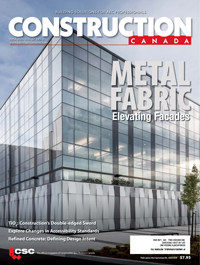Essential knowledge for consistent fenestration specification
What is in NAFS?
NAFS and other standards have been updated since 2020. These updates may be reflected in proposed changes to the 2020 National Model Codes and, if accepted, could be included in the 2025 edition.
NAFS-17 applies to fixed and operable windows, and patio and terrace doors, which also can be integrated into Other Fenestration Assemblies products (refer to Sidebar 2 below). The purpose of NAFS is to evaluate windows products for comparable performances and to define performance levels. Aspects evaluated by NAFS include resistance to air leakage, water penetration, and structural environmental loads. In addition, evaluate for quality and durability through auxiliary testing such as operating force, ensuring ease of operation for occupants.
Minimal performance levels, relevant tests, and the test type depends on the product’s performance classes (PC). PC definitions describe a project’s typical characteristics and suggest differences in the testing protocols and the minimal dimensions required to undergo these tests as per NAFS.
| Sidebar 2 – Fenestration product type deifinitions |
| • North American Fenestration Standard (NAFS) is for windows, doors, secondary storm products (SSPs), tubular daylight devices (TDDs), roof windows, and unit skylights. • Out of scope are interior products, garage doors, roof-mounted smoke, and heat-relief vents, sloped glazing, curtain walls, window wall, storefronts, commercial entrance systems, sunrooms, revolving doors, and commercial steel doors. • As per the National Building Code of Canada (NBC) 2020, “Other Fenestration Assemblies” includes curtain wall, window wall, storefront, and glazed architectural structures |

First, NAFS’ mandatory testing protocols involve measuring air leakage as per ASTM E283-04 at 75 Pa (1.57 psf). The result will be a measure of the volume of air going through the window at stable pressure differential per second and divided by the window surface area. Fixed products must meet the fixed level air leakage requirement of 0.2L/(s•m²) [0.04 cfm/sf], and operable products must minimally comply with the A2 level requirements of 1.5L/(s•m²) [0.30 cfm/sf]. The expression “air leakage” is used because both infiltration and exfiltration are tested since air can flow in both directions (refer to Sidebar 3 below).
Next, resistance to water penetration, validated in NAFS, follows ASTM E331-00 uniform static air pressure. Depending on the PC, the window specimen must resist water leakage at a defined minimal pressure of 15 per cent of the design pressure. Criteria to succeed this test differs in the U.S. and Canada. Be cautious when analyzing products to ensure the water penetration test complies with Canadian test requirements, namely that no water remains in an undrained fenestration framing cavity. However, water retained as droplets or surface film are not considered evidence of a failed test.
Finally, structural testing for NAFS references ASTM E330/330M-14, which involves two types of tests, each at a positive and negative static load.
- The first test validates how much a window will deflect under a specified design pressure. This does not validate for dangerous wind loads conditions, but it can demonstrate highly uncomfortable window movement for taller specimens. While all PCs are required to test for structural deflection, passing L/175 is only mandatory for commercial window (CW) and architectural window (AW) classes.
- The second tests the structural-ultimate wind load to 150 per cent of the static design load. All PCs must pass successfully to comply with NAFS. Operable products must remain locked during the test and operate after the test’s completion. This test helps ensure occupants egress safely.






